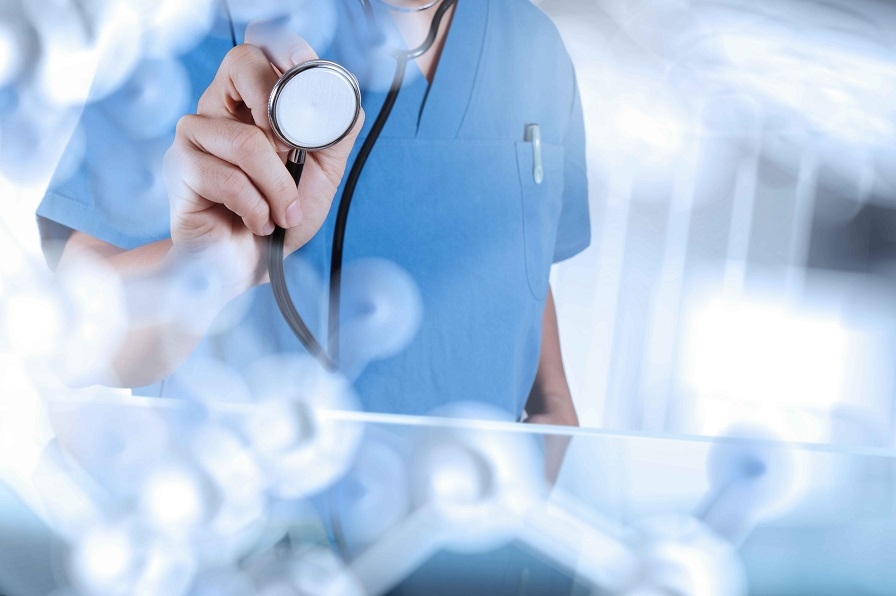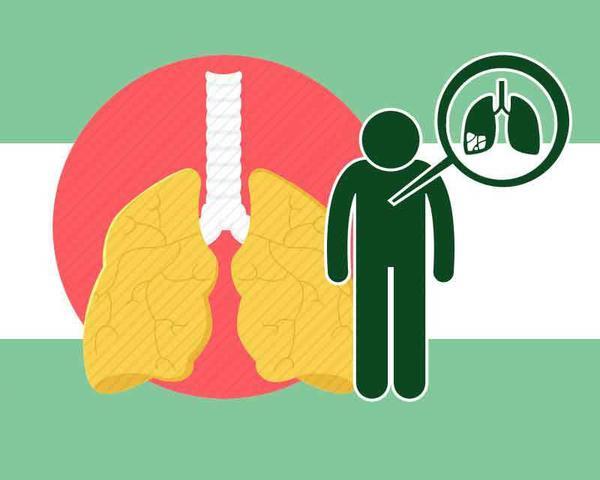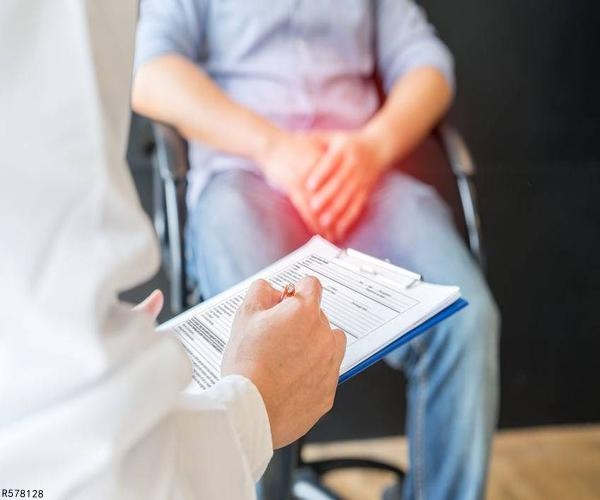上皮粘膜在放化疗作用下发生炎症反应可导致粘膜炎,粘膜炎可影响胃肠道和口腔,导致患者疼痛、无法进食、体重减轻甚至造成局部感染。此外,级别严重的粘膜炎可导致患者化疗剂量降低或抗肿瘤治疗延迟,最终影响患者的抗肿瘤疗效和预后。大约30-40%接受化疗的癌症患者可发生粘膜炎,接受造血干细胞移植(Hematopoietic stem cell transplantation,HSCT)的患者这一比例上升到60-85%,接受放疗联合化疗的头颈部肿瘤(Head and neck cancer,HNC)患者粘膜炎的发生率上升到90%[1]。粘膜炎的程度不仅取决于抗肿瘤治疗方案、剂量和给药周期,还取决于患者自身因素。例如,女性患者在接受5-氟尿嘧啶(5-FU)治疗时发生严重粘膜炎的风险更大[2],与5-氟尿嘧啶分解代谢的关键酶二氢嘧啶脱氢酶缺乏的患者类似[3]。然而,受异常上皮增生影响的患者,如银屑病,粘膜炎发病率明显降低。一般来说,老年、女性、超重、药物清除率降低和遗传易感性是粘膜炎发生的风险因素。
粘膜炎的发生由一连串事件组成,这些事件可以分为五个阶段,连续发生并在机制上相互关联。粘膜损伤称为粘膜炎起始期,由放疗和/或化疗引起,与化疗或放疗同时发生。全身化疗和放疗诱导组织损伤,导致活性氧(Reactive oxygen species,ROS)释放以及DNA损伤,从而导致基底和基底上皮细胞死亡[4]。特别是,DNA链断裂激活细胞凋亡[5],坏死细胞释放内源性损伤相关的分子模式(DAMP),是粘膜炎发生的第二阶段特征,损伤的粘膜细胞促进参与粘膜炎过程的基因转录包括核因子-κB(NF-κB)和促炎细胞因子(TNF-α、 L-6、IL-1β)、细胞粘附分子等 [6-7]。促炎细胞因子也存在于粘膜内,可诱导结缔组织和内皮的早期损伤,并抑制组织氧化和促进上皮基底细胞死亡。在这一阶段, c-JUN和c-JUN氨基末端激酶(JNK)被激活,进而引起细胞膜结合分子的释放导致参与该过程的其他转录因子的激活[8]。如核因子-红系2相关因子2(NRF2),它是一种碱性亮氨酸拉链蛋白,可促进损伤和炎症过程中抗氧化蛋白的表达[9]。此外,化疗或放疗也会损伤成纤维细胞,从而导致蛋白-1(AP1)的激活和金属蛋白酶(MMPs)的分泌,如MMP1和MMP3,它们可降解胶原上皮下基质和分解上皮基底膜。上述过程中产生的损伤反应信号可不断放大,在激活其他通路的同时,通过正反馈机制放大了最初的损伤。如释放的TNF-α启动靶细胞上丝裂原活化蛋白激酶(MAPK)的激活,同时也可维持NF-κB的活性。在这一阶段,几次损伤会损害粘膜和粘膜下结构。然而,患者在此阶段表现出的症状很少。MAPK信号传导通过JNK的激活介导胱天蛋白酶3的激活和细胞死亡,进而微调AP1的转录活性。此外,高水平的TNF-α激活鞘磷脂酶,增加神经酰胺途径介导的促凋亡信号,并与IL-1β一起调节MMP1和MMP3的活性[10-11]。此外,受损的角蛋白细胞释放转化生长因子β1(TGF-β1),进而抑制细胞周期,募集白细胞并维持NF-κB活性,从而改善损伤介导的信号传导[12]。粘膜炎的临床表现在炎症过程的第四阶段,即溃疡期是很明显的。在此阶段,粘膜和粘膜下的完整性受到破坏,患者会自述疼痛,需要进行临床干预。粘膜下层损伤的存在可导致单核细胞浸润介导的炎症反应,从而促进新的促炎细胞因子的释放,从而放大促凋亡介质的表达并增加组织损伤[13-14]。同时化疗或放疗后出现的中性粒细胞减少症,其持续时间长和严重程度,患者可能会出现菌血症或败血症,主要由链球菌和葡萄球菌引起[15]。粘膜炎是一种急性反应,大多数可随着抗肿瘤治疗的结束而消退。在这个阶段,愈合过程被激活,在此过程中,来自粘膜下层细胞外基质和间充质的刺激促进组织上皮化[16]。
虽然目前临床上有越来越多的新抗肿瘤药物,但用于预防或治疗粘膜炎的治疗方案很少。值得注意的是,Palifermin是一种重组人角质形成细胞生长因子1(Keratinocyte growth factor 1,KGF-1),是唯一一个获得FDA和EMA批准的药物,用于预防HSCT前接受高剂量化疗加全身放疗的口腔粘膜炎[17]。Palifermin可刺激上皮细胞增殖和分化,从而促进化疗和/或放疗诱导的损伤后更快的组织再生。此外,它还具有抗氧化和抗凋亡活性以及抗促炎作用。该药物在预防口腔粘膜炎方面的疗效也在头颈癌患者中得到了验证。两项不同的研究表明,用Palifermin治疗的患者表现出高级别(≥3级)口腔粘膜炎的发生率较低[18-19],然而,该药物的高成本和对该药物可能会促进肿瘤生长使得其不适合用于HNC患者。此外下表中我们列举了一些迄今为止在临床前和临床阶段已经证实可预防口腔粘膜炎的药物,并根据其作用机制进行分组。
表1根据作用机制对预防口腔粘膜炎的药物进行分组
|
分类 |
特点 |
作用机制 |
参考文献 |
|
抗氧化剂 |
|||
|
氨磷汀 |
磷酸化氨基巯基化合物 |
促进 ROS 清除剂的募集,减少 DNA 链断裂 |
[20-21]
|
|
谷氨酰胺 |
氨基酸 |
发挥抗氧化活性,促进谷胱甘肽合成 |
[22]
|
|
口服补锌制剂 |
必需矿物质 |
防止脂质过氧化,取代氧化还原活性金属,诱导金属硫蛋白合成 |
[23]
|
|
维生素E |
脂溶性α-生育酚 |
防止 ROS 释放引起的组织损伤 |
[24] |
|
N-乙酰半胱氨酸 |
天然氨基酸 L-半胱氨酸的 N-乙酰衍生物 |
发挥抗氧化活性,促进谷胱甘肽合成、髓过氧化物酶活性、黄嘌呤脱氢酶和氧化酶活性。 |
[25-26]
|
|
炎症和细胞因子生成抑制剂 |
|||
|
姜黄 |
姜黄属花卉植物 |
降低NF-κB活性 |
[27] |
|
盐酸苄达明冲洗液 |
吲唑类非甾体抗炎药 |
抑制促炎细胞因子TNF-α和IL-1β的活性和生成 |
[28-29]
|
|
己酮可可碱 |
黄嘌呤衍生物 |
调节免疫固有促炎反应 |
[30] |
|
多靶点天然药物 |
|||
|
蜂蜜 |
外用物 |
减轻烧伤和压迫伤口 |
[31-32] |
|
中草药 |
靛蓝根提取物 红景天提取物 |
抗炎和抗病毒活性 刺激免疫系统 |
[33-34]
|
|
洋甘菊漱口水 |
水注入粉末状花 |
抗炎、镇痛和抗小鼠和细菌活性 |
[35-36] |
|
芦荟凝胶 |
芦荟属肉质植物的汁液 |
促进伤口愈合 |
[37] |
|
物理干预 |
|||
|
低水平激光治疗 |
低强度单色激光 |
促进受损组织的再生 |
[38] |
|
口腔冷冻疗法 |
冰片、冰块 |
促进局部血管收缩,从而减少粘膜对化疗药物的暴露 |
[39] |
|
口腔护理 |
由口腔护理专家进行规范的口腔护理和频繁的口腔检查 |
预防感染 |
[40] |
|
乳杆菌胶囊 |
益生菌 |
保留粘膜肠道结构 |
[41-42] |
抗肿瘤治疗的发展显著改善了患者的生存率。然而,尽管治疗变得越来越有效,但抗肿瘤治疗诱导的口腔粘膜炎治疗或预防仅有很少的有效选择,口腔粘膜炎通常会导致治疗终止或需要调整治疗方案,同时增加了住院率,从而增加了公共卫生成本并降低了患者的生活质量。通过从机制方面深入了解并汇总相关的治疗方案,利于临床医为不同的患者设计个体化靶向治疗,降低严重不良反应的发生,延长抗肿瘤治疗的治疗时间,从来改善癌症患者的生活质量,从而降低其管理成本。
参考文献
[1]Villa A, Sonis ST. Pharmacotherapy for the management of cancer regimen- related oral mucositis[J]. Expert Opin Pharmacother. 2016;17:1801–7.
[2] Chansky K, Benedetti J, Macdonald JS. Differences in toxicity between men and women treated with 5-fluorouracil therapy for colorectal carcinoma[J]. Cancer. 2005;103:1165–71.
[3] Sloan JA, Goldberg RM, Sargent DJ, Vargas-Chanes D, Nair S, Cha SS, et al. Women experience greater toxicity with fluorouracil-based chemotherapy for colorectal cancer[J]. J Clin Oncol. 2002;20:1491-8.
[4] Sonis ST. The pathobiology of mucositis[J]. Nat Rev Cancer. 2004;4:277-84.
[5] Manakova S, Puttonen KA, Raasmaja A,et al. Ara-C induces
apoptosis in monkey fibroblast cells[J]. Toxicol In Vitro. 2003;17:367–73.
[6] Logan RM, Stringer AM, Bowen JM,et al. Serum levels of NF-kappaB and pro-inflammatory cytokines following administration of mucotoxic drugs[J]. Cancer Biol Ther. 2008;7:1139–45.
[7] Logan RM, Stringer AM, Bowen JM, et al. The role of pro-inflammatory cytokines in cancer treatment-induced alimentary tract mucositis: pathobiology, animal models and cytotoxic drugs[J]. Cancer Treat Rev. 2007;33:448-60.
[8] Davis RJ. Signal transduction by the JNK group of MAP kinases[J]. Cell. 2000; 103:239–52.
[9] Braun S, Hanselmann C, Gassmann MG, et al. Nrf2 transcription factor, a novel target of keratinocyte growth factor action which regulates gene expression and inflammation in the healing skin wound[J]. Mol Cell Biol. 2002;22:5492–505.
[10] Bamba S, Andoh A, Yasui H,et al. Matrix metalloproteinase-3 secretion from human colonic subepithelial myofibroblasts: role of interleukin-17[J]. J Gastroenterol. 2003;38:548-54.
[11] Sasaki M, Kashima M, Ito T, et al. Differential regulation of metalloproteinase production, proliferation and chemotaxis of human lung fibroblasts by PDGF, interleukin-1beta and TNF- alpha. Mediators Inflamm. 2000;9:155-60.
[12] Bian L, Han G, Zhao CW,et al. The role of Smad7 in oral mucositis[J]. Protein Cell. 2015;6:160–9.
[13] Alikhani M, Alikhani Z, He H,et al. Lipopolysaccharides indirectly stimulate apoptosis and global induction of apoptotic genes in fibroblasts[J]. J Biol Chem. 2003;278:52901-8.
[14] Engels-Deutsch M, Pini A, Yamashita Y, et al. Insertional inactivation of pac and rmlB genes reduces the release of tumor necrosis factor alpha, interleukin-6, and interleukin-8 induced by Streptococcus mutans in monocytic, dental pulp, and periodontal ligament cells[J]. Infect Immun. 2003;71:5169-77.
[15] Mougeot JC, Stevens CB, Morton DS,et al;. Oral Microbiome and Cancer The rapy-Induced Oral Mucositis[J]. J Natl Cancer Inst Monogr. 2019;53:lgz002.
[16] Sonis ST. Pathobiology of mucositis[J]. Semin Oncol Nurs. 2004;20:11-5.
[17] Spielberger R, Stiff P, Bensinger W, Gentile T, et al. Palifermin for oral mucositis after intensive therapy for hematologic cancers[J]. N Engl J Med. 2004;351:2590-8.
[18] Henke M, Alfonsi M, Foa P, et al. Palifermin decreases severe oral mucositis of patients undergoing postoperative radiochemotherapy for head and neck cancer: a randomized, placebo- controlled trial[J]. J Clin Oncol. 2011;29:2815–20.
[19] Le QT, Kim HE, Schneider CJ, et al. Palifermin reduces severe mucositis in definitive chemoradiotherapy of locally advanced head and neck cancer: a randomized, placebo-controlled study[J]. J Clin Oncol. 2011;29:2808-14.
[20] Koukourakis MI. Amifostine in clinical oncology: current use and future applications. Anticancer Drugs. 2002;13:181-209.
[21] Mell LK, Movsas B. Pharmacologic normal tissue protection in clinical radiation oncology: focus on amifostine. Expert Opin Drug Metab Toxicol. 2008;4:1341-50.
[22] Blijlevens NM, Donnelly JP, Naber AH, Schattenberg AV, DePauw BE. A randomised, double-blinded, placebo-controlled, pilot study of parenteral glutamine for allogeneic stem cell transplant patients. Support Care Cancer. 2005;13:790-6.
[23] Cerchietti LC, Navigante AH, Lutteral MA, Castro MA, Kirchuk R, Bonomi M, et al. Double-blinded, placebo-controlled trial on intravenous L-alanyl-L-glutamine in the incidence of oral mucositis following chemoradiotherapy in patients with head-and-neck cancer. Int J Radiat Oncol Biol Phys. 2006;65: 1330-7.
[24] Peterson DE. New strategies for management of oral mucositis in cancer patients. J Support Oncol. 2006;4:9-13.
[25] Vidal-Casariego A, Calleja-Fernandez A, Ballesteros-Pomar MD,et al. Efficacy of glutamine in the prevention of oral mucositis and acute radiation-induced esophagitis: a retrospective study[J]. Nutr Cancer. 2013;65:424-9.
[26] Ward E, Smith M, Henderson M, et al. The effect of high-dose enteral glutamine on the incidence and severity of mucositis in paediatric oncology patients[J]. Eur J Clin Nutr. 2009;63:134–40.
[27] Rao S, Dinkar C, Vaishnav LK, et al. The Indian Spice Turmeric Delays and Mitigates Radiation-Induced Oral Mucositis in Patients Undergoing Treatment for Head and Neck Cancer: An Investigational Study. Integr Cancer Ther. 2014;13:201-10.
[28] Epstein JB, Silverman S Jr, Paggiarino DA, et al. Benzydamine HCl for prophylaxis of radiation-induced oral mucositis: results from a multicenter, randomized, double-blind, placebo- controlled clinical trial[J]. Cancer. 2001;92:875-85.
[29] Kazemian A, Kamian S, Aghili M,et al. Benzydamine for prophylaxis of radiation-induced oral mucositis in head and neck cancers: a double-blind placebo-controlled randomized clinical trial[J]. Eur J Cancer Care (Engl). 2009;18:174-8.
[30] Kudrimoti M, Curtis A, Azawi S, et al. Dusquetide: A novel innate defense regulator demonstrating a significant and consistent reduction in the duration of oral mucositis in preclinical data and a randomized, placebo-controlled phase 2a clinical study[J]. J Biotechnol. 2016;239:115-25.
[31] Biswal BM, Zakaria A, Ahmad NM. Topical application of honey in the management of radiation mucositis: a preliminary study[J]. Support Care Cancer. 2003;11:242-8.
[32] Khanal B, Baliga M, Uppal N. Effect of topical honey on limitation of radiation-induced oral mucositis: an intervention study[J]. Int J Oral Maxillofac Surg. 2010;39:1181-5.
[33] You WC, Hsieh CC, Huang JT. Effect of extracts from indigowood root (Isatis indigotica Fort.) on immune responses in radiation-induced mucositis[J]. J Altern Complement Med. 2009;15:771-8.
[34] Loo WT, Jin LJ, Chow LW, et al. Rhodiola algida improves chemotherapy-induced oral mucositis in breast cancer patients. Expert Opin Investig Drugs. 2010;19(Suppl 1):91-100.
[35] Carl W, Emrich LS. Management of oral mucositis during local radiation and systemic chemotherapy: a study of 98 patients[J]. J Prosthet Dent. 1991;66: 361-9.
[36] Fidler P, Loprinzi CL, O’Fallon JR, et al. Prospective evaluation of a chamomile mouthwash for prevention of 5-FU- induced oral mucositis[J]. Cancer. 1996;77:522-5.
[37] Eilers J, Harris D, Henry K.Evidence-based interventions for cancer treatment-related mucositis: putting evidence into practice[J]. Clin J Oncol Nurs. 2014;18 Suppl:80-96.
[38] Chaveli-Lopez B, Bagan-Sebastian JV. Treatment of oral mucositis due to chemotherapy[J]. J Clin Exp Dent. 2016;8:e201-9.
[39] Peterson DE, Boers-Doets CB, Bensadoun RJ,et al. Management of oral and gastrointestinal mucosal injury: ESMO Clinical Practice Guidelines for diagnosis, treatment, and follow-up[J]. Ann Oncol. 2015;26(Suppl 5):v139-151.
[40] Mego M, Chovanec J, Vochyanova-Andrezalova I, et al. Prevention of irinotecan induced diarrhea by probiotics: A randomized double blind, placebo controlled pilot study[J]. Complement Ther Med. 2015;23:356-62.
[41] Prisciandaro LD, Geier MS, Butler RN,et al. Probiotic factors partially improve parameters of 5-fluorouracil-induced intestinal mucositis in rats[J]. Cancer Biol Ther. 2011;11:671-7.
本站所注明来源为"爱爱医"的文章,版权归作者与本站共同所有,非经授权不得转载。
本站所有转载文章系出于传递更多信息之目的,且明确注明来源和作者,如果您认为我们的转载侵犯了您的权益,请及时通过电话(400-626-9910)或邮箱(zlzs@120.net)通知我们,我们将第一时间处理,感谢。





